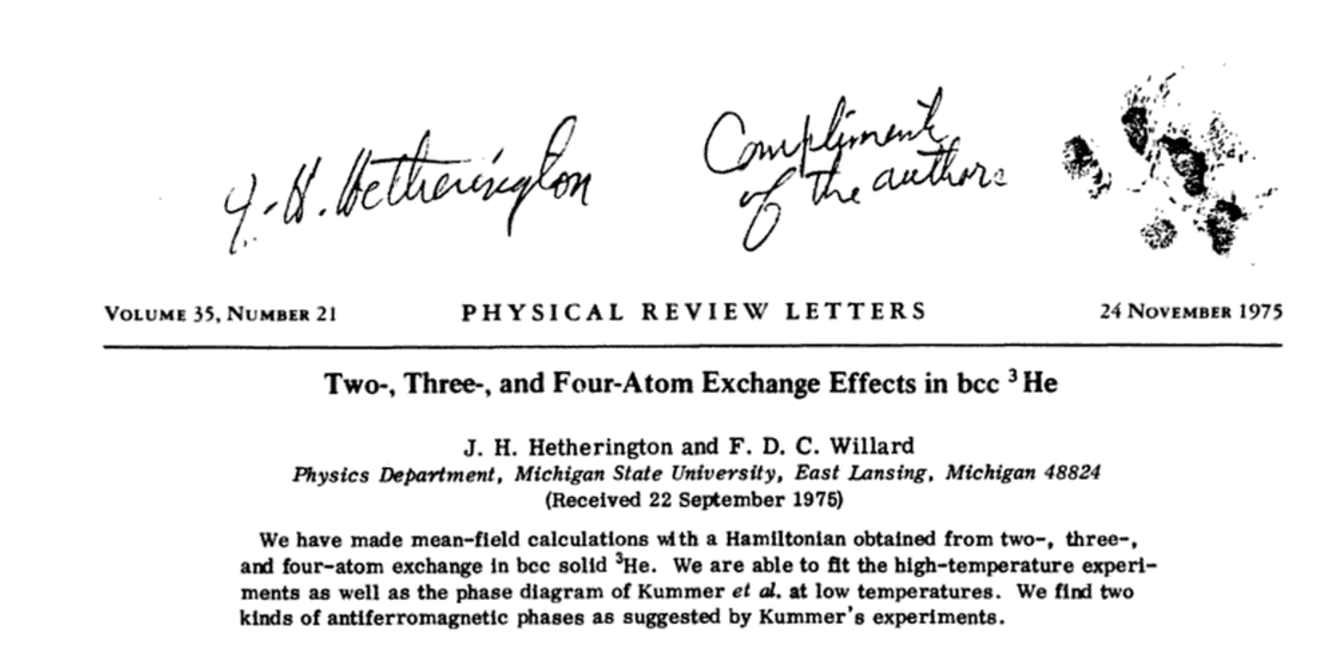Regrettably, none of us will get to be cats. Most of us will never write a published physics paper either, let alone a highly respected one. But somehow, in the 1970s, a phenomenal feline named Chester managed to do all of this under the tutelage of his human, physicist Jack H. Hetherington. He even had a pawesome pen name — F.D.C. Willard. Yes, really.
At least FDC Willard wrote papers, not just pee’d on them! http://t.co/Uhh3QOmArJ #AcademicCats pic.twitter.com/JAL6AQvFkQ
— Academia Obscura (@AcademiaObscura) August 6, 2014
In November 1975, Hetherington, a physics professor at Michigan State University, penned a paper about the behaviour of atoms at various temperatures entitled “Two-, Three-, and Four-Atom Exchange Effects in bcc 3He”. Before sending it to the Physical Review Letters, Hetherington noticed he’d been using the pronouns “we” and “us” throughout the paper, even though he was the sole author. Instead of editing the piece — which was written on a typewriter — Hetherington cleverly added his cat as co-author. According to Atlas Obscura, Chester’s nom de plume was inspired by the name of the kitty’s father, Willard, and the scientific name for a domestic cat — Felix domesticus. Thus, F.D.C. Willard got his first taste of scientific fame.
“Two-, Three-, and Four-Atom Exchange Effects in bcc 3He” has been referenced several times since its publication, and is considered pretty influential to this day. But somewhere along the way, the cat got out of the bag and the true identity of Hetherington’s co-author was revealed. Hetherington embraced it and even began signing copies of the paper with Chester’s “signature”.

Image: Screen Shot via Google Books
While Chester might not have truly written a physics paper, according to certified cat behaviour consultant and animal behaviour researcher Mikel Delgado, cats are pretty smart creatures who like to experiment with their environment. Maybe they’re all just physicists wrapped in fur.
“I think that all animals are intelligent because they’re still present on the planet, despite humans screwing up their environment and that they’re good at particular things,” Delgado told Gizmodo. “Cats are good at predation and predicting moves of their prey and being successful hunters. They can also exploit human resources and survive without us.”
Cat owners are keenly aware of their cats’ “physics experiments”, which usually involve knocking things over for no apparent reason.
“I think things that knock things off shelves are usually bored,” Delgado said. “They’re looking to see if they can get something in their environment to interact with them, and often, when they knock things off shelves, a lot of people will notice that the cat is usually staring right at them.” Apparently, cats do this because they have learned to get our attention, so clearly, they understand response to stimuli. Cats would use science for mischief.
Though F.D.C. Willard has long since died, his legacy endures. Hopefully, more scientists will follow in Hetherington’s footsteps because honestly, physics needs more cats.
“I think more scientists might want to credit their cats for helping,” Delgado said.
